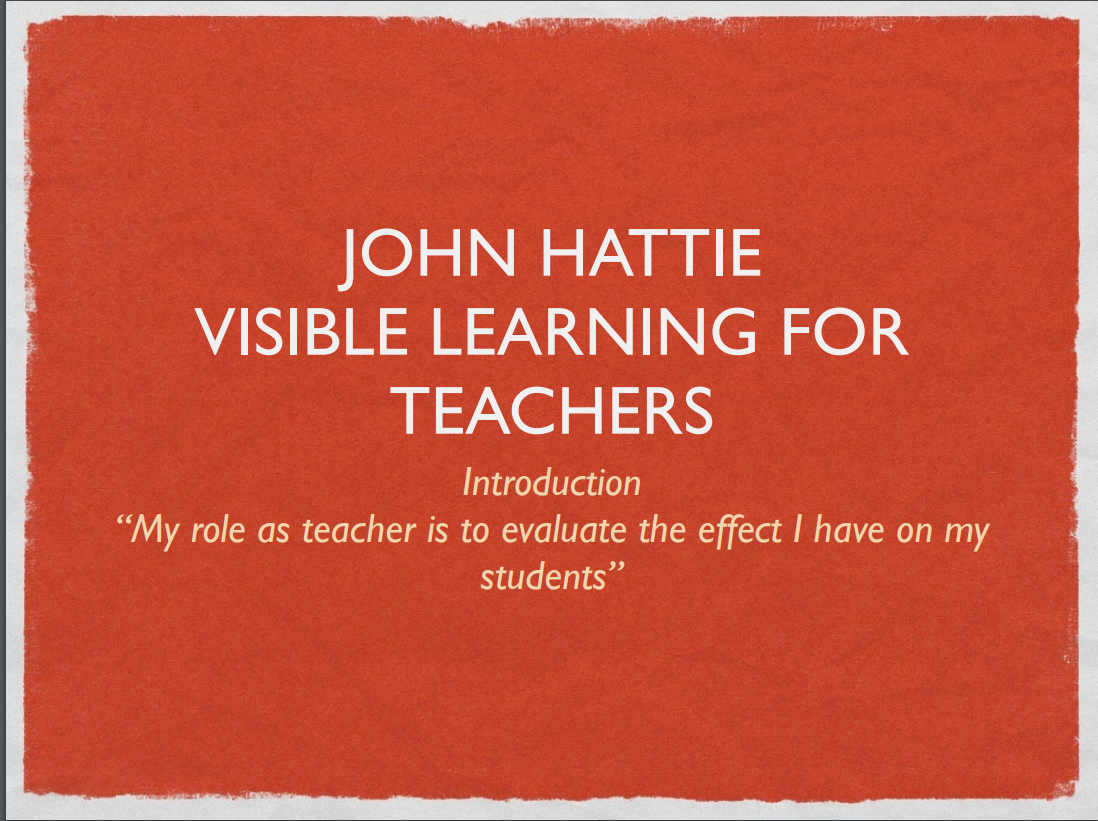|
|
Visible learning stems from 15 years of research from Professor John Hattie which is based on millions of students and represented the largest meta-analysis and synthesis of what improves student learning outcomes.
It means an enhanced role for teachers as they become more reflective and evaluative of their own pedagogy. Visible teaching and learning occurs when thinking and learning processes are visible, meaningful, shareable and amplified. |
Know thy impact Professor Hattie from the University of Melbourne believes there are 8 important mind frames of a visible teacher:
|
As visible teachers, we can create visible learning in our classrooms by:
|
|
|
Educators need to be aware of a students need for surface, deep or transfer learning or a combination, depending on the learning experience. In this way Fisher, Frey & Hattie (2016) explain that the teacher can "maintain the challenge while providing appropriate instructional supports.
As you will hear in the video, showing students what success will look like at the end of learning is among the most powerful things an educator can do to enhance learning. This can be achieved by:
|
Read More . . .
Useful Links
Please note that these pages contain a collection of resources and links to activities to support and enhance classroom teaching and learning. The thumbnails and activities are the property of the authors/creators and available due to their generosity in sharing their work. All sources are acknowledged on the ACKNOWLEDGEMENT OF SOURCES page.
This website contains NSW syllabus content prepared by the NSW Education Standards Authority for and on behalf of the State of New South Wales which is protected by Crown copyright. https://www.educationstandards.nsw.edu.au/wps/portal/nesa/home
This work is licensed under a Creative Commons Attribution-NonCommercial-ShareAlike 4.0 International License.
This website contains NSW syllabus content prepared by the NSW Education Standards Authority for and on behalf of the State of New South Wales which is protected by Crown copyright. https://www.educationstandards.nsw.edu.au/wps/portal/nesa/home
This work is licensed under a Creative Commons Attribution-NonCommercial-ShareAlike 4.0 International License.

